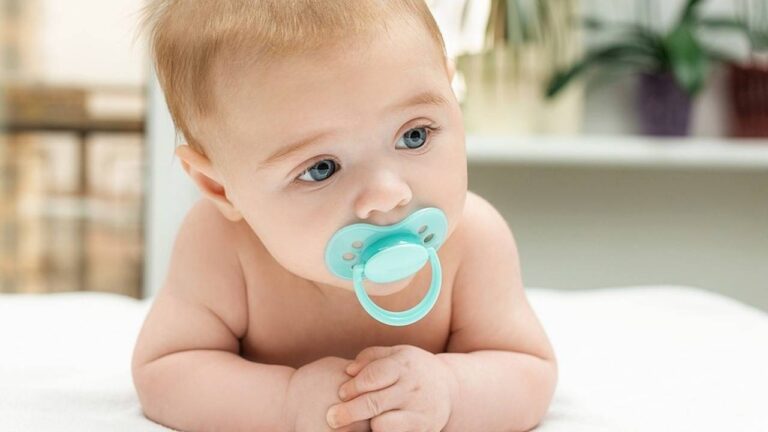Do you notice your child reaching for their pacifier more than usual? Wondering if it might be doing more than just calming them down. These are common questions for parents once baby teeth start coming in.
Pacifiers and teeth don’t always mix well when the habit sticks around too long. They can change how teeth grow, affect the shape of the jaw, and even lead to speech issues later on. It’s not about using pacifiers at all—it’s about how long and how often they’re used during key growth years.
At Holt Orthodontics, we help families spot early signs of trouble and understand what’s normal. Some kids outgrow the habit without any problems, but others may need a little help to avoid future dental issues.
If you’ve started to wonder what’s really happening behind that soothing habit, now’s a good time to get clear answers. Your child’s smile depends on it.
How Pacifiers Influence Oral Development
Some habits seem harmless at first—but over time, they can quietly affect how a child’s mouth and teeth grow. That’s often the case with pacifiers and teeth during early development.
The steady sucking motion puts pressure on the upper jaw. As this continues, it can change the shape of the roof of the mouth, making it higher or narrower than normal. A smaller arch can lead to crowded teeth as more grow in.
Tooth alignment is another concern. The front teeth might start to push forward or not touch when the mouth is closed. This is called an open bite and is more likely to happen when pacifier use continues past age three.
It also affects how muscles and the tongue work. If the tongue isn’t resting in the right spot because of constant sucking, it can make it harder for kids to swallow correctly or speak later on.
Not every child will have these changes, but it’s helpful to know how pacifiers and teeth are connected. Watching for small signs early can prevent bigger dental problems in the future. The sooner the habit is managed, the easier it is to support healthy growth.
How Long Is Too Long? Understanding Timing
Pacifiers are great for soothing babies, but they’re not meant to stick around forever. Knowing when to stop can make a big difference in how your child’s teeth grow.
Most dentists recommend starting to wean off the pacifier around age 2. At that age, it’s less likely to cause lasting changes to the teeth or mouth. Some occasional use after that might be okay, but once it becomes an all-day habit or stretches past age 3, the risk of dental problems goes up.
Bite issues, like front teeth not closing together or the jaw shifting, are more common when pacifier use continues for too long. It’s not just about the teeth—it can also affect speech or swallowing if the habit lingers.
Every child is different, but it helps to keep an eye on how often they’re using it. If they need it only at night, that’s a good sign you’re close to being done. Cutting back slowly can make things easier for both you and your child.
Waiting too long doesn’t always mean there will be problems—but acting early lowers the chances. A few small changes now can help keep your child’s smile healthy as they grow.
7 Common Dental Issues Linked to Prolonged Pacifier Use
Pacifiers and teeth don’t always mix well when the habit goes on for too long. Some changes happen slowly, and they can be easy to miss at first. But knowing what to watch for can help you step in early and avoid bigger problems later. Here are seven common dental issues linked to long-term pacifier use:
1. Open Bite
You might notice a space between the top and bottom front teeth, even when your child’s mouth is closed. This is called an open bite, and it often happens when the sucking habit continues past toddler age. It can make chewing harder and may need orthodontic care later.
2. Overjet (Front Teeth Pushed Forward)
Sometimes the top front teeth start to stick out more than usual. This is known as overjet. It can change the look of the smile and may also affect how your child speaks or bites into food.
3. Crossbite
In some cases, the upper teeth sit behind the lower ones when the mouth is closed. That’s called a crossbite, and it’s caused by pressure on the sides of the mouth. It can lead to uneven jaw growth if not addressed early.
4. Narrow Palate
A pacifier that’s used too much can shape the roof of the mouth. When it becomes too narrow or high, it can crowd the teeth and even affect speech sounds. You may also hear it called a “small arch.”
5. Speech Delays
When the tongue isn’t in the right spot because of constant sucking, it may be harder for kids to form words clearly. Sounds like “s,” “z,” or “th” are often affected. In some cases, speech therapy is needed to help.
6. Delayed Tooth Eruption
If a pacifier is in the way, it might slow down how fast the teeth come in. Some teeth may take longer to break through or come in slightly off track.
7. Gum Irritation
A pacifier that’s used too often can press against the gums, causing redness or sore spots. This is more common in toddlers who keep it in their mouth for long stretches during the day or night.
Pacifiers vs. Thumb Sucking: Is One Worse Than the Other?
Parents often wonder which habit causes more problems—pacifiers or thumb-sucking. Both can affect how teeth grow, but there are a few key differences to keep in mind.
Pacifiers are easier to manage because you can take them away when it’s time to stop. You’re in more control of when and how often your child uses it. That makes breaking the habit a little easier in most cases.
Thumb sucking, on the other hand, can be tougher to handle. Kids usually start earlier and keep the habit longer, even without realizing it. Since thumbs are always available, they might suck more often and for longer periods—especially during sleep. That extra pressure can lead to bigger alignment problems in the long run.
When it comes to pacifiers and teeth, both habits have an effect. But between the two, thumb sucking tends to stick around longer and can be harder to break, making it more likely to cause dental changes.
When to Seek Help from a Pediatric Dentist or Orthodontist
Some signs are easy to miss, especially when pacifier use has been part of daily life for a long time. But once your child turns 3, it’s a good idea to start watching for any changes in their teeth, bite, or even how they talk.
If the front teeth don’t touch, or your child has trouble closing their mouth properly, it could be a sign that the pacifier is starting to affect their bite. You might also notice changes in how they speak, like trouble saying certain sounds clearly.
Checking in with a pediatric dentist or orthodontist early on can help catch small issues before they turn into bigger ones. They can look at how your child’s teeth are coming in and let you know if anything needs attention.
When it comes to pacifiers and teeth, a quick visit now can save you from more complicated care later. Early help makes a big difference.
How to Wean Your Child Off the Pacifier
Letting go of the pacifier isn’t always easy—for kids or parents. But small, steady steps can help make the process a lot smoother.
Start by cutting back during the daytime. Keep the pacifier for naps or bedtime only, then work your way down from there. Clear limits help kids know what to expect, like saying “Only for sleeping now.”
Find other ways to comfort your child. A soft blanket, a favorite stuffed animal, or calming music can help fill that need. These little swaps go a long way.
Make sure to cheer them on. Praise each step, even if it’s small. Stickers, hugs, or simple rewards can boost their confidence.
Pacifiers and teeth are closely connected, and stopping the habit early can help avoid future dental problems. The good news? Most kids adjust quicker than you think when they feel supported. Stay patient, stay positive, and take it one day at a time.
Tips to Support Healthy Dental Growth
Once pacifier use is out of the picture, it’s a great time to focus on habits that help your child’s teeth grow in strong and healthy. Little changes at home can make a big difference as they get older.
Here are a few easy ways to support healthy dental growth:
- Schedule regular checkups
Get your child used to seeing the dentist every six months. It helps catch any problems early. - Skip drinks that cause buildup
Offer water instead of juice or milk at bedtime. This keeps sugar off the teeth overnight. - Don’t use bottles in bed
Letting your child fall asleep with a bottle can lead to early tooth decay. - Start brushing early
As soon as the first tooth shows up, begin brushing with a soft toothbrush and a tiny bit of fluoride toothpaste.
Good care after breaking pacifier habits helps protect against the effects of pacifiers and teeth misalignment later on.
FAQs: Pacifiers and Your Child’s Teeth
Got questions about pacifiers and teeth? Here are some quick answers to the ones parents ask most often.
1. Can pacifiers ruin baby teeth?
Not right away—but long-term use can lead to changes in how teeth grow or line up.
2. Is it okay to use pacifiers while teething?
Yes, as long as it’s clean and not used constantly. Too much use can put pressure on growing teeth.
3. Do orthodontic pacifiers prevent dental issues?
They’re shaped to be gentler on the mouth, but they don’t fully prevent problems with pacifiers and teeth.
4. What age should I take away the pacifier?
Most dentists recommend stopping by age 2 to avoid bite or jaw changes.
5. Will my child need braces because of a pacifier?
Not always. Some kids are fine, but longer use can increase the chances later.
Final Thoughts: Healthy Smiles Start Early with Holt Orthodontics
Pacifiers can be helpful in the early months, but when the habit continues too long, it can affect how teeth grow. The good news is most issues related to pacifiers and teeth can be prevented—or fixed—if caught early.
If you’re starting to notice changes or just want peace of mind, it’s a good time to check in with a dental professional. Holt Orthodontics can take a look and give you honest, simple advice based on your child’s needs.
Early visits don’t just catch problems—they help your child feel comfortable with dental care from the start. That’s a win for everyone.




